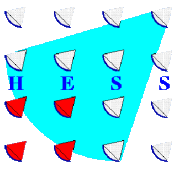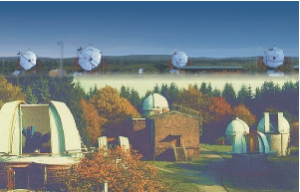
H.E.S.S. Observations of Gamma Ray Bursts


|
H.E.S.S. Observations of Gamma Ray Bursts |

|
|||||||||||||||||||||||||||||||||||||||||||||||||||||||||||||||||||||||||||||||||||||||||||||||||||
Gamma-ray bursts (GRBs), the most intense gamma-ray events in the Universe, arrive from any random directions from the sky without precedent in astronomy. This poses a big challenge to study their prompt and afterglow phases simultaneously in any other wavelength, including the very high-energy (VHE) gamma-ray regime. Therefore, observations of GRBs require a timely decision (from seconds to hours) and for H.E.S.S., these are done using alerts of GRBs through the Gamma-ray Burst Coordination Network (GCN) in real-time. For a general review on the current status of VHE gamma-ray observations of GRBs, see Chadwick, P. M. (2007), Royal Society of London Philosophical Transactions Series A, 365, 1343.
In the following you can find the most update information on the H.E.S.S. GRB observing program.
On-board Swift/BAT triggers distributed by the Swift satellite, as well as triggers from INTEGRAL and HETE-II (mission ended around March 2006) confirmed by ground-based analysis are followed by H.E.S.S. observations. Once available, alerts distributed by the Fermi/LAT instrument will also be implemented. Upon the reception of a GCN notice from one of these satellites (with appropriate indications that the source is a genuine GRB), the burst position is observed if the zenith angle is smaller than 45 degrees - to ensure a reasonably low energy threshold - during H.E.S.S. dark time (*).
An automated program is running on site to keep the shift crew alerted of any new detected GRBs in real-time. Depending on the observational constraints and the measured redshifts of the GRBs reported through GCN circulars, observations of the burst positions are started up to ∼24 hours after the burst time, typically with an exposure time of 2 hours in wobble mode. The redshift criteria are set such that a long delayed observation time with respect to the burst time is more tolerable for a GRB with a lower redshift than one with a higher redshift or one without reported redshift. Therefore, we appreciate timely determinations (or estimates) of redshifts for many GRBs, especially for those with z < 1. Correspondence can be made through the contacts provided here.
Note (*): H.E.S.S. observations are taken in darkness and when the moon is below the horizon. The H.E.S.S. fractional dark time is about one-fifth.
Reference: Tam, P. H., Wagner, S. J., Pühlhofer, G., and the Hess Collaboration (2006), Nuovo Cimento B Serie, 121, 1595 arXiv
Dedicated observations of a total of 39 GRBs were performed over the years 2003 to 2008.
2003 |
2004 |
2005 |
2006 |
2007 |
2008 |
2009 |
|
GRB 030821* |
GRB 041211* |
GRB 050922C |
GRB 061121 |
GRB 071003* |
GRB 081230 |
GRB 090201 |
Note: (1) The 22 GRBs marked with '*' are presented in Astronomy and Astrophysics 495 (2009) 505-512. (see also Tam et al. (2007), a proceeding of the meeting 070228 - The Next Decade of GRB Afterglows in Amsterdam).
(2) The results of GRB 060602B, whose position was observed serendipitously with H.E.S.S. during the burst has been published in Astrophysical Journal 690 (2009) 1068-1073.
This page is maintained by
Thomas P.H. Tam.
Last update of this page on November 20, 2012